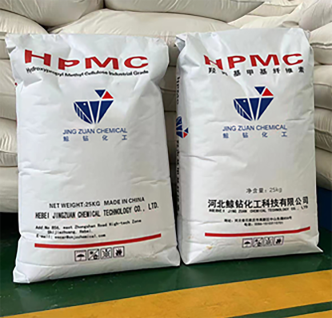
Dec . 05, 2024 04:21 Back to list
HPMC Gel Preparation Methods for Enhanced Performance and Stability in Applications
HPMC Gel Preparation A Comprehensive Guide
Hydroxypropyl Methylcellulose (HPMC) is a versatile cellulose ether widely used in various industries, from pharmaceuticals to food and cosmetics. One of its most intriguing applications lies in gel preparation, which can serve multiple purposes, including drug delivery, thickening agents, and stabilizers in various formulations. This article provides a detailed overview of HPMC gel preparation, emphasizing its properties, benefits, and step-by-step methodology.
Properties of HPMC
HPMC is a non-ionic, water-soluble polymer derived from cellulose. It is known for its effective emulsifying, thickening, and stabilizing properties. One of the primary benefits of using HPMC is its ability to form gels when mixed with water. The resulting gel can possess varying viscosities based on the concentration of HPMC and the temperature used during preparation. Furthermore, HPMC gels can provide controlled release of active ingredients, making them suitable for pharmaceutical and cosmetic applications.
Applications of HPMC Gels
1. Pharmaceuticals HPMC gels serve as matrices for drug delivery systems, ensuring that medications are slowly released over time, thus enhancing bioavailability and therapeutic effects.
2. Cosmetics In the cosmetic industry, HPMC is used in lotions, creams, and gels, acting as a thickening and stabilizing agent, improving the product's texture and feel.
3. Food Industry HPMC is used as a thickener and stabilizer in various food applications, enhancing mouthfeel and texture.
Step-by-Step Methodology for HPMC Gel Preparation
The preparation of HPMC gel involves several precise steps. Below is a systematic approach to preparing an HPMC gel
Materials Required
- Hydroxypropyl Methylcellulose (HPMC) - Distilled water - Mixing container - Stirring rod or mechanical stirrer - Heat source (if needed) - pH meter (optional)
hpmc gel preparation

Preparation Steps
1. Determine Concentration Decide the desired concentration of HPMC in the final gel. Typical concentrations range from 1% to 5%, depending on the application's requirements.
2. Measure HPMC Accurately weigh the required amount of HPMC using an analytical balance. Ensure to use a clean and dry container to prevent contamination.
3. Prepare Distilled Water Measure the appropriate amount of distilled water based on the desired concentration. The temperature of the water can impact the dissolution rate of HPMC. Warm water (about 50°C) can help facilitate better mixing and quicker dissolution.
4. Hydration of HPMC Slowly sprinkle the measured HPMC powder into the distilled water while continuously stirring. It’s vital to add HPMC gradually to prevent clumping and ensure uniform dispersion.
5. Mixing Continue to stir the mixture thoroughly. If any clumps form, they should be broken apart with the stirring rod or a mechanical stirrer to achieve a smooth consistency.
6. Heat Application (if necessary) If a homogenous gel is not formed at room temperature, gentle heating may be applied while stirring. However, avoid boiling, as it may denature the polymer. Heating can improve the solubility and reduce the viscosity of the solution.
7. Cooling After achieving a uniform mixture, allow the gel to cool if heat was applied. This step is essential for stabilizing the gel's structure.
8. pH Adjustment If required by your application, measure and adjust the pH of the gel. HPMC typically exhibits good stability across a wide pH range, but certain formulations may require specific pH levels for optimal performance.
9. Storage Transfer the HPMC gel into a suitable container for storage. Ensure it is sealed properly to avoid contamination. Label the container with the preparation date and concentration for future reference.
Conclusion
The preparation of HPMC gels is a straightforward process that harnesses the unique properties of Hydroxypropyl Methylcellulose. With applications spanning multiple industries, HPMC gels are invaluable for their versatility and effectiveness. By following the steps outlined in this guide, you can create high-quality HPMC gels tailored to your specific needs, whether for pharmaceutical, cosmetic, food, or construction applications.
-
Versatile Hpmc Uses in Different Industries
NewsJun.19,2025
-
Redispersible Powder's Role in Enhancing Durability of Construction Products
NewsJun.19,2025
-
Hydroxyethyl Cellulose Applications Driving Green Industrial Processes
NewsJun.19,2025
-
Exploring Different Redispersible Polymer Powder
NewsJun.19,2025
-
Choosing the Right Mortar Bonding Agent
NewsJun.19,2025
-
Applications and Significance of China Hpmc in Modern Industries
NewsJun.19,2025







